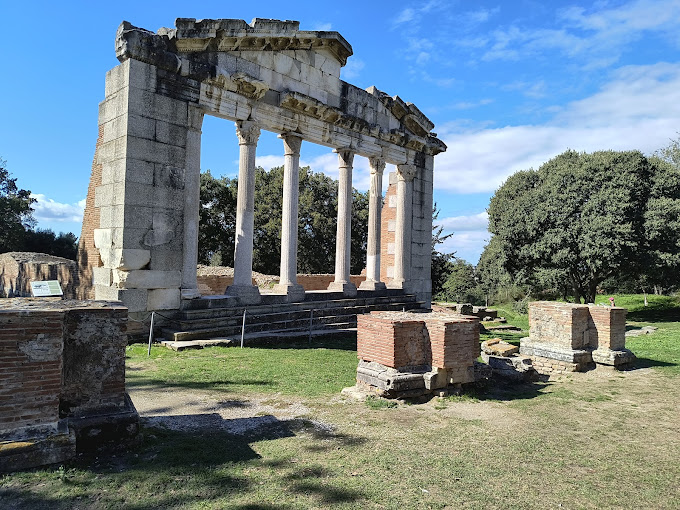
Exploring Apollonia Archaeological Park, once a resort town where wealthy Romans vacationed, is now a symbol of Albania’s rich cultural heritage.
Why Visit Apollonia
Located on the Adriatic coast, this ancient city was a major center of trade, culture, and commerce, known for its beautiful architecture and vibrant cultural scene.
The ancient ruins of Apollonia in southwest Albania provide a fascinating window into the past.
This once-prominent ancient city-state allows you to discover Albania’s role in the classical world and immerse yourself in rich history.
From its founding through peak cultural influence, Apollonia has an intriguing story. Its enduring legacy continues to shape Albania’s national identity.
The opportunity to walk among well-preserved relics from Apollonia’s heyday is a key reason to visit.
History And Significance (Exploring Apollonia Archaeological Park)
Apollonia was founded in the 7th century BCE by Greek colonists seeking to expand trade networks.
Its coastal access to the Adriatic and position between Greek and Illyrian territories fueled growth.
By the 4th century BCE, the city became a respected cultural center. Renowned philosophers, scholars, and artists flocked to Apollonia.
Major academies and the most extensive library in the region nurtured intellectual advancements.
Apollonia’s contributions to philosophical thinking, art, and innovations helped shape Mediterranean society.
Today, Apollonia’s longevity and past glory represent Albania’s important regional influence and resilience.
The city remains a source of heritage and pride.
Its ruins tell stories of ingenuity that still connect to Albania’s spirit.
Things To See And Do
The sprawling archaeological park allows you to imagine Apollonia at its peak vividly. Major sites include:
- The ruins of Roman-style baths with intricate mosaic floors and terraced pools.
- A Byzantine basilica featuring rare frescoes with early Christian iconography.
- A 2nd-century AD triumphal arch of limestone with high arches and Corinthian columns.
- A 4th-century amphitheater where performances and gatherings entertained citizens.
- An extensive hillside necropolis with rock-cut tombs carved into the landscape.
The on-site museum houses pottery, sculpture, jewelry, and other artifacts from Apollonia.
These sites provide insights into how ancient residents lived, worked, relaxed, and expressed creativity.
Taking a taxi ride to nearby activities to complement your exploration include hiking for panoramic views, boat trips along the picturesque coastline, and sampling fresh Mediterranean cuisine.
13 Comments
Comments are closed.